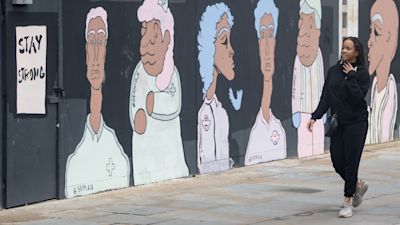One in five BAME workers feel treated unfairly at work because of ethnicity during coronavirus crisis

One fifth of BAME workers in the UK feel they have been treated unfairly at work due to their skin colour during the coronavirus crisis, a survey has suggested.
And around one in six BAME workers who contributed to the Trades Union Congress survey said they felt they had been put more at risk of exposure to coronavirus because of their ethnic background.
Many reported being forced to do frontline work that white colleagues had refused to do.
Savanah Taj, General Secretary of TUC Wales, explains what members of the BAME should do if they do not feel comfortable returning to work
Other contributors to the survey said they were denied access to proper personal protective equipment (PPE), refused risk assessments and were singled out to do high-risk work.
More than 1,200 BAME workers got in touch with the TUC to share their experiences of the workplace during the pandemic after the union launched a call for contributors.
"Many have been discriminated against at work – and many have been put at greater risk than their white colleagues during the pandemic. That is not right," said TUC General Secretary Frances O’Grady.
“Racism has blighted – and in some cases prematurely ended – BME lives during this crisis. And it’s clear from our research that racism and discrimination at work were part of many BME people’s day-to-day experience well before the pandemic.
“This crisis has to be a turning point. The government must challenge systemic racism and inequality.”
A survey before the Covid-19 pandemic revealed 45% believed they were given harder or less popular work than white colleagues.
This poll also found:
Just over three in ten (31%) BME workers told the TUC that they had had been bullied or harassed at work
A similar percentage (32%) had witnessed racist verbal or physical abuse in the workplace or at a work organised social event
Over a third (34 %) reported being unfairly turned down for a job
Around a quarter (24%) had been singled out for redundancy
One in six (16%) said they left their job because of the racist treatment they received.
The TUC also says previous analysis has found that BME people tend to be paid less than white workers with the same qualifications - and that they are more likely to work in low-paid, undervalued jobs on insecure contracts.
One nurse, who withheld her name, told the TUC: "When I went to work I was given a suspected Covid-19 patient to care for.
When I said that the staff should be rotated so that we can all take a break from looking after Covid-19 patients, the senior nurse said if I found it difficult she would inform my agency to stop booking me."
She said she was forced to resign "not because I did anything wrong, but because I had the wrong skin colour".
Another nurse raised similar concerns.
She said: "I was allocated to the red zone caring for suspected and confirmed cases of Covid-19 without full protection.
"White counterparts were sent to work in the blue zone and on telephone triage. After raising concerns about patient and staff safety and the lack of PPE I was removed from the rota."
As a result, the TUC is calling on the government to publish an action plan to tackle inequalities in the workplace.
They are also urging the government to introduce mandatory ethnicity pay gap reporting, ban zero-hours contracts, and publish all the equality impact assessments.
Additional new TUC analysis of official statistics shows BME people are more likely to be working in professions with higher coronavirus mortality rates than white people, such as security guards, carers, nurses and drivers.
- Nearly three in 10 (28%) of male BME workers are employed in a specific occupation with a higher male mortality rate, compared to less than one in five (18%) of white male workers.
- This makes male BME workers 57% more likely to be working in one of these occupations than white male workers.
- One in five (20%) of female BME workers are employed in a specific occupation with a higher female mortality rate, compared to one in seven (14%) of white female workers.
- This makes female BME workers 48% more likely than female white workers to be employed in an occupation with a higher female mortality rate.